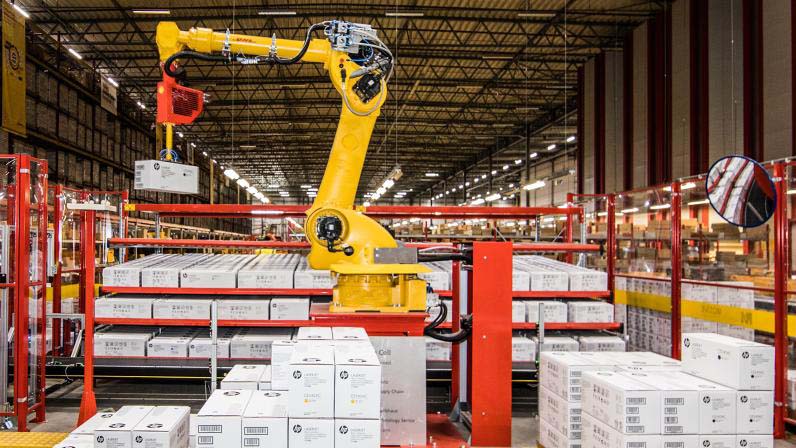Concept of Logistics Automation
Logistics refers to one of the main applications for technology such as automation, artificial intelligence, and robotics. In the last few years, factors such as economic growth, purchasing patterns, affordability, and increasing disposable income across various countries have observed significant changes. With the rising affordability, customers constantly search for superior service and have many desires & want, with respect to the availability of products and the delivery time & price.

These huge requirements and desires of customers necessitate warehousing, transportation, and manufacturing to become more efficient. Logistics automation means the application of automation software and machinery with an aim to increase the effectiveness of logistics operations.
Several tools like the software (business control software, integration software, and operation control software, etc.) and tools like automated guided vehicles, vertical lift modules, automated storage and retrieval systems, conveyors, robots, and associated services.
How automation assists companies having logistics operations?
Automation works along with the individuals in a warehouse or office. Instead of substituting with robots, organizations that deploy automation are reallocating human employees to new jobs that include a close partnership with bots and maintenance of new machines. If you look for high effective, more efficient route to industry, machine learning could the solution for you. It has become a crucial technology for numerous logistics companies.
For CEOs, logistics automation is the top-most priority due to a surge in a labor shortage, growing demand from online retailers, and boosting technical advances. Workers will not have to do mundane and monotonous tasks, rather the AI can take over.
What boosts the demand for logistics automation?
1. The field of Robotics has witnessed rapid developments
Robots are employed to move products from one location to another in an effective and time-bounded way. They are used to automate repetitive, boring, and unsecured activities in several processes, like warehousing and material handling, without the need for any human intervention. The rising labor price is one of the major worries for the companies in the manufacturing sector. Companies are deploying robotic technologies in order to automate logistics processes, hence reducing manual labor and causing in less operational prices.
Advancements in robotics technologies have supported the development of automated vehicles that are utilized in warehouses. An AI-based system can direct robots to perform specific tasks in a real-time situation and improve autonomous decision-making features. The burden of personnel included in logistics operations can be reduced with the help of advanced robots that are programmed to carry out tedious and physically demanding activities.
The rising adoption of robots by several end-use industries to enhance logistics operations is one of the most considerable aspects estimated to boost the development of the logistics automation industry.
2. Deployment of autonomous drones and vehicles
Autonomous vehicles and drones assume a crucial part in automated logistics processes. Companies like Tesla and Google have brought considerable advancements in driverless vehicle technologies. The new era of logistics will involve big autonomous trucks that help in the delivery of goods to distribution centers.
Autonomous forklifts are used in order to unload packages with the help of a network of conveyor belts and robot arms. Tesla, a key maker of electric vehicles, is taking steps to launch completely autonomous heavy-duty freight vehicles. Likewise, companies like Amazon and UPS are putting capital into the development of flying drones in order to automate delivery processes.
3. Enhanced customer service
The domain of business is a consistent struggle for the majority of customers including both new and loyal customers. The main objective of logistics automation is to enhance customer services. It offers superior control of the shipment while handling the supply chain in a better way. One of the major benefits of the software is that it enables total monitoring of the transferring goods from one area to another, automatic accounting, creation of automatic documents, transaction monitoring, and invoice payments, and customizations, etc. These aspects are likely to drive the growth of the global logistics automation industry in the next few years.
Summary:
Logistics automation is considered as the automation of each process in logistics management. It takes the help of various machines and software in order to carefully operate the logistics operation without human intervention. Automation monitors and captures each activity and thus facilitates smooth logistics management. With the help of logistics automation, complete supply chain processing has achieved high accuracy.
The global logistics automation market would witness various growth avenues over the forthcoming years. This is credited to the rising demand from the industry to enhance the productivity of warehouses, increase profitability, and cut down operational costs. Logistics automation can assist the enterprise in all three aspects; this is estimated to boost the global logistics automation market.
Along with this, the global logistics automation market would witness bright growth prospects due to a number of factors including changing purchasing rends of customers, a surge in economic growth, and a considerable rise in disposable incomes.
Comments